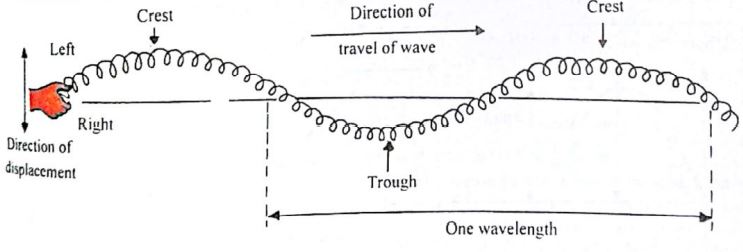Longitudinal And Transverse Waves For WAEC and JAMB

Progressive wave is the propagation of energy as a result of vibrating waves that move energy from place to place. Longitudinal and Transverse waves are the two types of progressive waves.
The distinction between the two types of waves depends on the direction of the vibrating particles with respect to the direction of travel of the wave.
Longitudinal
In this type of wave, the particles of the medium vibrate parallel to the direction of the wave velocity. Longitudinal waves are readily formed on a stretched spring or ‘slinky’ by alternatively compressing and expanding one end or by moving the slinky to and fro in the direction of its length.
A series of compressions and expansions or rarefactions propagate along the slinky or spring. The compressions are areas where the coil is momentarily close together, rarefactions or expansions are areas where the coils are momentarily far apart. Compressions and rarefactions in longitudinal waves correspond to the crests and troughs, respectively, of a transverse wave.
Examples: Sound Waves, Tsunami waves, seismic-P waves, and vibration in spring.

Transverse
In this type of wave, the particles of the medium vibrate at the right angle to the direction of the wave velocity.
Examples: Light waves, radio waves, and waves produced in a rope or string.

Differences
| Transverse | Longitudinal |
| It can be plane polarized | It can’t be plane polarized |
| Wave particles move perpendicularly to the direction of the wave velocity | Wave particles move in the same direction to the direction of the wave velocity |
Note the condition for a wave to be plane polarized is for the vibrations to be in just one direction normal to the direction in which the wave is traveling.
